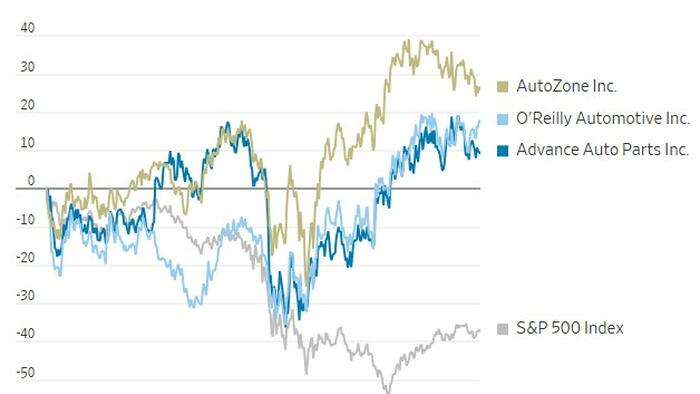In recent months, American consumers have found themselves grappling with the effects of inflation, rising interest rates, and ongoing supply-chain challenges, leading to a notable decline in the purchase of new vehicles. The Bureau of Economic Analysis reports that the four-year average for annual vehicle sales has decreased to 15.5 million units, down from 17.7 million prior to the onset of the COVID-19 pandemic. This downturn in new car sales, while seemingly advantageous for auto repair and parts businesses—since older vehicles typically necessitate more maintenance—has also brought about complications. Surprisingly, even though many vehicles between four and eleven years old are prime candidates for repairs, recent trends indicate that a significant number of Americans are now opting to cut back on maintenance expenditures.
A specific instance illustrating this trend is reported by tire retailer Monro, which saw a drastic reduction in same-store sales attributed to lower- and middle-income consumers gravitating toward less expensive, off-brand tire options as a result of a surplus of imports in the market. Notably, spending on essential services such as brake and shock repairs has decreased even further. Similarly, Genuine Parts, the parent company of Napa auto-supply stores, reported its most significant stock drop in decades amid a reported slump in retail sales. CEO William Stengel pointed out that cautious consumers are increasingly deferring necessary maintenance-related purchases. Valvoline followed suit with a report of weaker-than-expected sales, leading to a 9% decline in shares, as home oil change services gain traction due to competitive, discounted offerings by local tire service centers.
Data from Carfax reveals that a staggering 30% of vehicles on American roads are overdue for routine tire rotations and 19% for oil changes, underscoring the widespread trend of consumers minimizing maintenance spending. This phenomenon, primarily among lower-income families, mirrors behaviors seen across various sectors, as they increasingly opt for more affordable choices. However, industry experts warn that this approach could lead to adverse outcomes. For instance, while a nameless tire priced at $149.99 for a Ford Explorer might come with a 40,000-mile warranty, a premium brand like Goodyear offers a more expensive option priced at $254 that includes a 60,000-mile warranty and promises enhanced safety features.
Simultaneously, the Manheim Used Vehicle Value Index has risen by 36% over the past five years, indicating that investing in maintenance may yield higher returns in the current vehicle resale market. This dynamic poses challenges for well-established brands, such as Goodyear, which reported an 8.3% decrease in tire sales in the Americas during the last quarter as they face stiff competition from low-cost imports seeking market share. Even as consumers prioritize budget-friendly options for parts, they simultaneously continue to rely on local automotive services—an area where foreign manufacturers have not yet established footing in the same way.
Furthermore, the burgeoning market for electric vehicles (EVs), which characteristically require less maintenance, poses an additional challenge to auto parts retailers and quick-lube chains. However, experts argue that it is too early to attribute the current drop in consumer spending solely to the rise of EVs, as pandemic-induced lifestyle shifts, such as an increase in remote work and a reduction in driving mileage since 2020, have also played a part. Interestingly, while driving levels have recently recovered to pre-pandemic norms, the overall trend in maintenance spending remains uncertain.
Despite the current economic challenges, there is a belief that maintenance spending will stabilize as the necessity for repairs and upkeep returns to pre-pandemic conditions. Historical data suggests that even during economic downturns, such as the recession from 2007 to 2009, auto parts retailers tended to outperform the market, with the three primary retail-focused chains exceeding the S&P 500 by an impressive average of 55 percentage points. While consumers may continue to undergo adjustments in spending habits, the essential nature of vehicle maintenance and repair will likely keep a steady demand for auto parts and services alive, even as economic conditions fluctuate.

